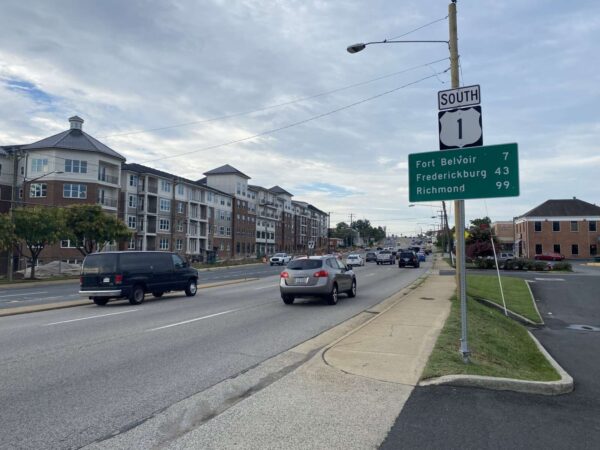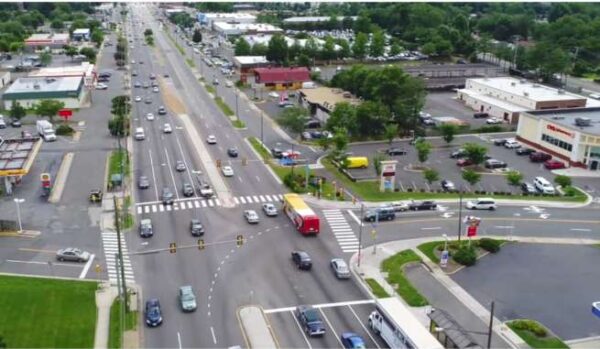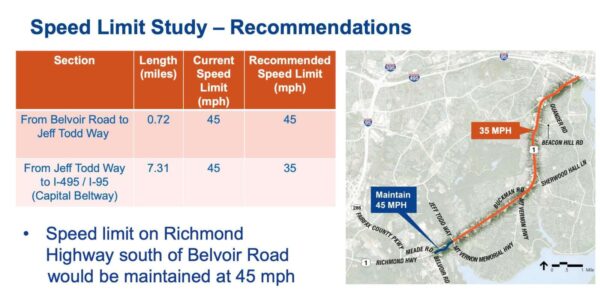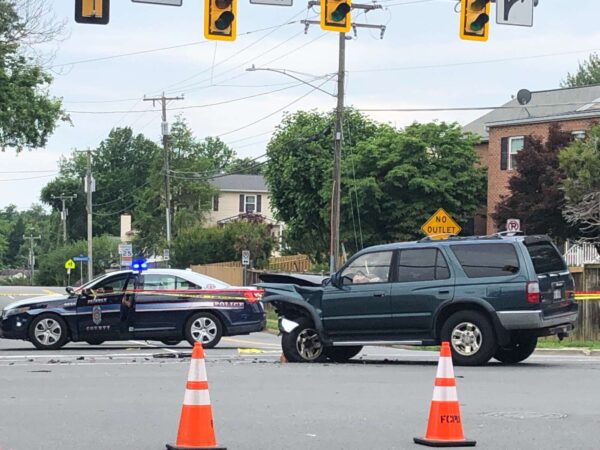
Driving on Richmond Highway in Fairfax County could get a little slower, potentially by the beginning of next year.
Virginia Department of Transportation staff said last week that the speed limit should be reduced from 45 to 35 mph along a 7.31-mile stretch of the roadway from the Capital Beltway at the Alexandria border to Jeff Todd Way in Mount Vernon.
The recommendation came from a year-long speed study prompted by concerns about the safety of the corridor, which saw two fatal pedestrian crashes in the span of a week earlier this July. The study found one 1.5-mile stretch that had a 75% higher crash rate than Virginia’s average.
According to the National Safety Council, speeding contributed to 29% of all traffic fatalities in the U.S. in 2020. Research suggests 10 mph can make a significant difference in the risk of severe injury or death that pedestrians face when hit by a vehicle.
Several states, including Virginia, have moved in recent years to lower speed limits on local streets, but about 60% of pedestrian deaths occur on major, non-interstate roads. In Fairfax County, speed limits in corridors like Richmond Highway and the also-treacherous Route 7 range from 35 to 45 mph even in increasingly urban, populous areas.
Though VDOT staff said reducing Route 1’s speed limit is expected to have a “minimal” impact on traffic, some community members at last week’s virtual meeting worried it might exacerbate congestion and cut-through traffic. Notably, the study recommended maintaining the 45 mph on the road through the Fort Belvoir area.
Others questioned the effectiveness of lowering the speed limit without robust police enforcement and other safety measures, such as added crosswalks and protected sidewalks. A recent report from the nonprofit Smart Growth America argued that driver behavior is more influenced by how roads are designed than posted speed limits.
How do you feel about lowering the speed limit on Richmond Highway and other major roads in Fairfax County? Is it a necessary safety improvement, or do you think other approaches should be considered instead?

The speed limit on a 7-mile stretch of Richmond Highway should be lowered to 35 mph, the Virginia Department of Transportation says.
The road from Jeff Todd Way to the I-95/I-495 (Capital Beltway) interchange currently has a speed limit of 45 mph.
Announced at a virtual public information meeting on Wednesday night (July 20), the recommendation comes from a speed study that VDOT began nearly a year ago.
The study determined that lowering the speed on that 7.31-mile stretch of Richmond Highway was best practice considering the high crash rate, the amount of pedestrian activity, the number of bus stops, and signalized intersections that are currently along this corridor.
“Change in speed allows for longer perception and reaction time for drivers,” VDOT project manager Warren Hughes said. “We want to…change driver behavior. By changing driver behavior, it will enhance safety in the corridor.”

As the study showed, crash rates were much higher on this section of Richmond Highway than the Northern Virginia and state averages for primary highways. On a particular 1.5-mile segment from Jeff Todd Way to Buckman Road, crash rates were 74% higher than the statewide average.
Just this month, two pedestrians were killed in separate crashes on the highway, which is also known as Route 1.
Officials noted that ample evidence suggests lowering speeds even a little saves lives, particularly when it comes to pedestrian-involved crashes.
“The impact of speed correlates to the chance of survival,” VDOT Northern Virginia District Traffic Engineer Gil Chlewicki said. “The lower the speed is when the vehicle hits the pedestrian, the better chance the pedestrian has to survive or less severe injuries. It decreases significantly, even with just five to 10 miles per hour.” Read More

Fairfax County is looking into purchasing additional “Know Your Speed” signs after a fatal crash that killed two Oakton High School students, and seriously injured a third.
After the Oakton crash in early June, the devices were placed on Blake Lane, where the teenagers were walking on the sidewalk before they were struck by a speeding car. Police say the driver, an 18-year-old who has been charged with involuntary manslaughter, was going around 81 mph where the speed limit was 35 mph.
“These signs, that are currently limited in supply and moved to different locations across the county, were deployed to Blake Lane immediately following the crash, and were very much appreciated by the community,” Providence District Supervisor Dalia Palchik said on Tuesday (July 19). “They have now been, understandably, rotated to another site. With a larger inventory of these devices, we could serve more communities for longer periods of time, but I am interested in the staff assessment of this idea.”
The Board of Supervisors directed staff to provide information and recommendations on purchasing more of the devices, which can take the form of signs on mobile trailers or fixed to posts as well as radar guns.
Dranesville District Supervisor John Foust said police have told him no one is available to place the speed devices in his district. The Fairfax County Police Department used to have three people who were properly trained to place them, but two left and one was assigned to a different squad, he said.
“I think we can add all the devices we want, but if we can’t get them in place…Part of this I would hope is that the police will come back and tell us how they’re going to take the devices we have and get them out into the field,” Foust said. “And I ask that it not be relying on district by district. I mean, it’s a countywide problem.”
There are different kinds of devices, and some don’t require a special certification to utilize the devices, Palchik said.
With the FCPD experiencing staffing challenges, Springfield District Supervisor Pat Herrity wondered if civilians could be trained to set up the devices.
“One of the things we might be able to look at as a solution is do we really need police officers to set these up, or can we get other folks trained to set it up? I don’t know whether that’s an option,” he said. Read More

